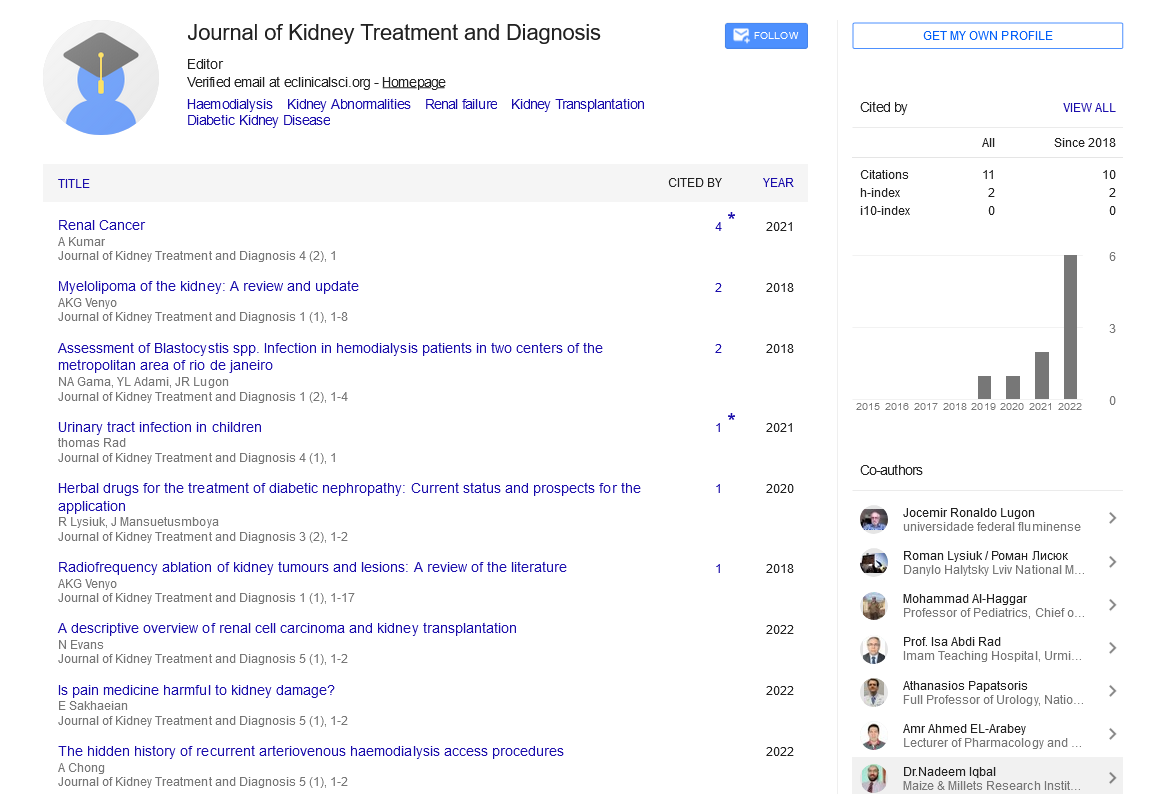
Sign up for email alert when new content gets added: Sign up
Abstract
Sickle cell renal disease; clinical signs of renal damage and novel processes involved
Author(s): Shannon Wright*, Scott Baker and Michael SchweizerOne of the most frequent side effects of sickle cell illness is kidney issues (SCD). They start early in life and are a major contributor to mortality in these patients. Vaso occlusion and hemolysis are the key pathogenic mechanisms that underlie the disease. The renal medulla's low oxygen partial pressure, high osmolarity, and acidic pH provide excellent circumstances for the sickling of red blood cells. Hyposthenuria is initially brought on by sickle-cell development in the renal medulla's vasa recta. This is common and manifests in childhood. When the infarcts are severe, microscopic and macroscopic haematuria can also happen, which is partly related to renal papillary necrosis. Glomerular filtration rate rises as a result of prostaglandins released by ischaemia in the renal medulla (GFR).
Adaptively, the proximal tubule's sodium reabsorption rises, and creatinine output also rises. As a result, the GFR calculated from creatinine can be too high. The most prevalent glomerular disease is focal segmental glomerulosclerosis. Albuminuria is quite frequent, and treatment with ACE inhibitors or ARBs has been observed to reduce it in 72.8% of participants. Recent research reveals that unbound hemoglobin damages podocytes and may play a role in these patients poor kidney function. Since they may offer a treatment alternative for sickle cell nephropathy, their consequences in SCD need to be more thoroughly investigated.
Full-Text | PDF




